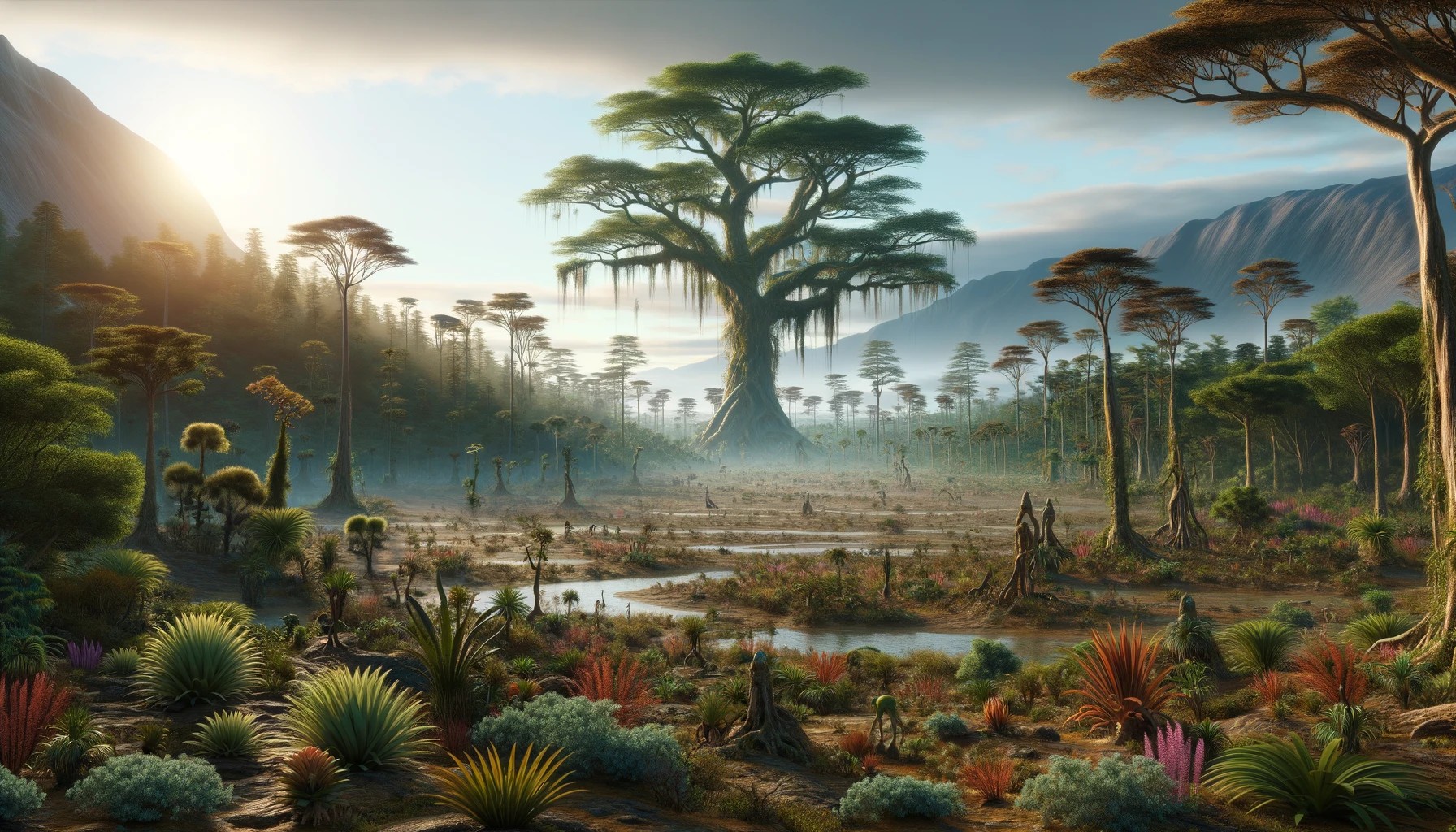In this section I want to share some of the wonder, truly the magnificence, that is the blend of complexity and practicality of the workings and the presence of a tree’s body. No less a miracle than your own, it’s a little scary how perfectly-designed natural systems are and how well they work, usually without any dysfunction. Even one single cell, one of trillions in a tree or human body, is a long way off in complexity and intricacy from what we can currently imagine humanity being able to duplicate. I want to discuss growth, form and function.
We’ve got tissue, and we can tell them apart by looking at the tree’s anatomy. Then there’s function, which we get into through physiology. So, we’re talking about the parts—the form, the anatomy—and what they do, which is all about function and physiology.
One of the most amazing things about plants as we know them today, and in their 425 million year history here on earth, is how little they were given to work with. What was the early world like that they evolved into? Really not so different from our own. Atmospheric oxygen levels were lower, but the basic physics and materials were pretty much the same. So let’s start with something that looks like a small leaf lying on the surface of the mud and think about what it might take to become, through a long set of steps, something like an oak tree. Here’s the early playing field: They had lots of sunshine, there was lots of water—although sometimes too salty or in the wrong places. They had abundant carbon available as gas in the atmosphere in the form of CO2 and, just as importantly, they had gravity. Anyone who walks up hills knows this; lifting any mass to a greater height requires some tricks. It’s work.
Everything changes, and plants were very different back then. The most important step that led to where we are today was the evolution of a set of internal, self supporting pipes that could move fluids inside the plant. These pipes needed to be strong so that the plant’s own weight and the constant draw of gravity were offset by the stem’s strength. Lying in the wet mud, you can absorb most of what you need right from the surface with no need for either structural support or internal piping. But the life force in early plants was strong. All living things on earth want to be successful, prosper, and somehow, through endlessly creative methods, ensure that their offspring have a fighting chance. So up they went, into more sunshine, and high enough for wide seed dispersal.
Much work had already been done, in the deep early history of Earth, to give early plants a head start. It is rare on Earth that complex systems just show up or that every life form would have to start from scratch. Nature always borrows systems that have proven their worth through time, and reuses or slightly modifies them to get a new working model. So, in the early harsh environment, plants already had photosynthesis, developed billions of years earlier by a bacteria called cyanobacteria. They formed our early atmosphere. So now we have a way to get energy. All living things need energy, and the early green single-celled lifeforms that had the pigment chlorophyll in them could make sugar from sunshine; a pretty good trick, in fact the best trick on earth. Without it, everything we know either wouldn’t be here or would be very different. Plants have always supplied the food basis that all other life forms depend on. No plants, no life as we know it.
So we have energy and sugar; how to use them? That major innovation is called respiration, burning sugar with oxygen. It happens in almost every living cell of almost all living things. I have to say almost, because life on earth is so creative and diverse that there are always exceptions—sometimes just a few, but they are there. Vive la créativité!
With photosynthesis and respiration on board, all early plants needed was a support system to hold themselves up against gravity and into the light. The answer came in the form of cell wall reinforcements. Makes perfect sense; the right answer is many times as easy as possible with the minimum of complexity: Don’t waste energy! If something is going to change, it’s going to happen inside the cell first. So if cells walls were really strong and, in their numbers uncounted, could stack and lie together to form a tissue that was flexible yet strong, and could move a lot of fluids, you could be very successful. We all call this miracle tissue wood; living functioning wood.


